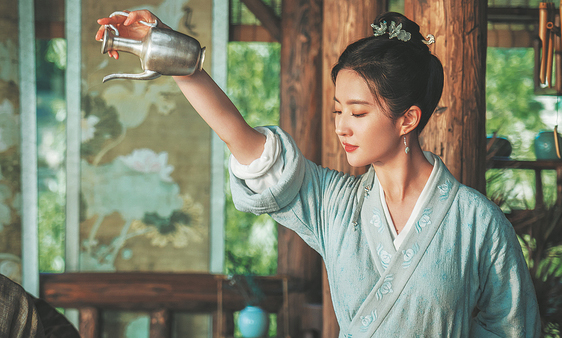Modern technology fuels centuries-old Qinqiang Opera
XI'AN, July 6 (Xinhua) -- Qinxiaoya, a virtual figure playing a young female role in Qinqiang Opera, has catched people's attention since it made its debut in an art festival in Xi'an, capital of northwest China's Shaanxi Province.
The design team employed 3D modeling to replicate the original clothes and accessories of the virtual actress. "To bring her true to life, we made great efforts to reproduce her gestures and decorations with the real voice of the opera performer," said Zhang Xi, a team member.
Qinqiang Opera, a Chinese folk opera genre originating in the Western Zhou Dynasty (1046 B.C.-771 B.C.), continues to thrive in a vast region of northwest China and was added to the country's intangible heritage list in 2006.
As a newcomer to this ancient art, Qinxiaoya demonstrates a youthful image. In an introductory MV of the Ninth China Qinqiang Opera Arts Festival held in June, she performed Qinqiang Opera remixed with rock and roll, fueling the interest of young people.
Creating such a figure is not an easy task, said Zhang. "The expression of Qinqiang Opera in this character must be accurate and vivid, which requires high standards of original painting design, model making, character animation, final rendering, to name a few."
"We hope to make her a spokesperson of the art of Qinqiang Opera and make related cartoons, movies and other diversified products in the future," said Zhang, adding that they are developing more functions for the virtual figure, who is expected to interact with netizens via livestreaming.
The technology that is injected into the opera can also be found among cinematic techniques.
Tapping her fingers to the rhythm of music and singing along with actors, Xiao Jie, a 59-year-old opera fan, enjoys a 3D Qinqiang Opera film "Three Drops of Blood."
Regarded as a masterpiece in Qinqiang Opera, "Three Drops of Blood," created in 1918, is deeply critical of pedantic and muddle-headed bureaucrats in the feudal society, frequented by fans over the past century.
Traditionally, actors perform at the center stage which is decorated with tables and chairs, and the band plays Chinese folk instruments in the wings, while in the 3D film, the centuries-old art takes on a new look.
"I watched a black-and-white film of the opera when I was young. At this time, watching it in a 3D form is truly intriguing. The audience can have a closer and clearer look at the performance," recounted Xiao.
Chinese operas have long historical ties to movies. The first movie in China, "The Battle of Dingjunshan," staged in 1905, was adapted from clips from Beijing Opera.
"Advanced cinematic techniques breathe new life into the time-honored opera, which is a typical epitome of the innovative development of traditional art," said Cui Wei, the secretary general of the China Theater Association.
Photos
Related Stories
Copyright © 2022 People's Daily Online. All Rights Reserved.









